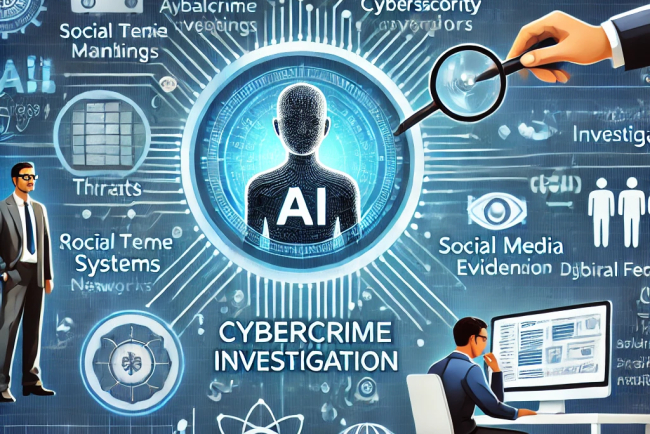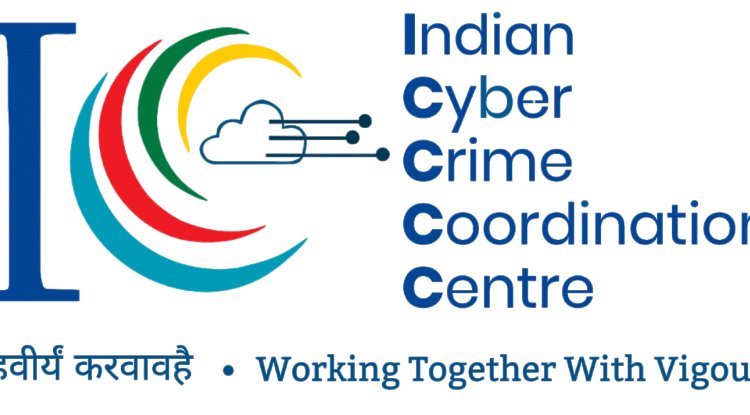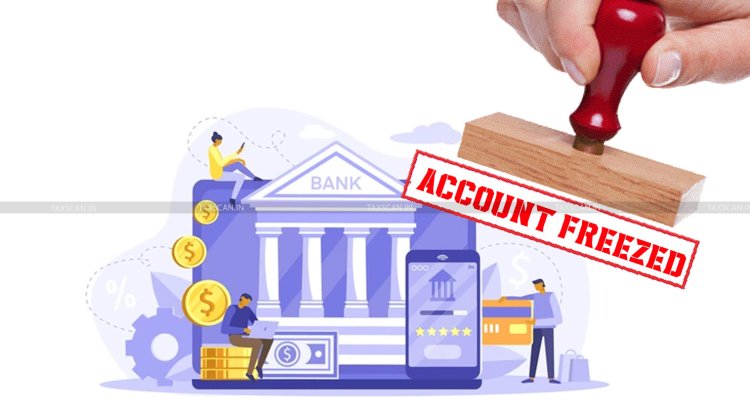The Doxxing Dilemma: From Digital Footprints to Real-World Threats”.
One of the most deadly types of internet harassment is doxxing, which is the willful disclosure of personal information. From OSINT methods, API overexposure, and metadata exploitation to sophisticated attacker strategies like IoT enumeration and SIM-swapping, this blog explores the technical components of a doxx. It looks at platform-level flaws that increase the threat, evaluates regulatory frameworks in various nations, and draws attention to forensic difficulties in attribution. The essay also discusses strong protection tactics including threat intelligence monitoring, endpoint hardening, and advanced privacy techniques like differential privacy, federated learning, and zero-knowledge proofs. Protecting privacy is essential to both individual and group security at a time when data is synonymous with identity.

Doxxing: A Weapon of Modern Age
As more and more of our lives are spent online, doxxing has become a terrifying reminder of how exposed our digital footprints may leave us.
Fundamentally, doxxing, often known as "doxing," is the practice of gathering and disclosing someone's personal or identifying information in public without that person's knowledge or consent. Doxxing is the deliberate exploitation of your digital footprint via the use of publicly accessible data and technological detective work; it is not magic. The phrase is derived from "dropping docs" (documents), in which private information, such as home addresses, phone numbers, employment information, or even the names of family members, is purposefully made public in order to expose, threaten, or hurt the victim.
Doxxing frequently exploits information that individuals unintentionally put in plain sight, such as social media postings, outdated forum accounts, data dumps, or public records, in contrast to hacking, which necessitates breaking into protected networks. Anyone with an internet presence is therefore a possible target.
The weaponization of doxxing is what makes it particularly dangerous.... making it a weapon of modern age.
Doxxing is not limited to online environments. When a target's personal information is made public, the repercussions swiftly spread to the outside world, frequently with disastrous outcomes.
- Harassment, both online and offline, from strangers.
- Dangers to one's physical security (such as swatting or stalking).
- Emotional pain that has a lasting impact on one's mental health.
Everyone is vulnerable, whether they are journalists, celebrities, or regular citizens. Doxxing has been a popular tactic in cancel culture, political intimidation, and digital harassment campaigns as more and more aspects of our life move to the cloud. This is a weapon of the digital era that turns information into an instrument of terror, not merely a privacy concern.
Real-World Consequences of Data Breach
- 58% of doxxing victims claimed receiving physical threats, and 32% said someone showed up at their home or place of employment, according to a 2023 Norton research.
- Among the well-known instances is Andrew Finch's 2017 swatting death, which was caused by doxxing.
This illustrates how digital privacy violations turn into threats to physical safety.
The Doxx's Anatomy: How It Works
Here is a step-by-step breakdown of how attackers put together their arsenal:
Step 1: Open-Source Intelligence (OSINT)
Attackers mostly use OSINT tactics, which collect information from publically available sources. This comprises:
- Social networking sites (Twitter, LinkedIn, Instagram, Facebook).
- WHOIS information for domain owners.
- People search engines and data broker websites (e.g., Spokeo, Whitepages).
- Databases that have been compromised and are frequently discovered on the dark web.
- Creepy is a geolocation tool that allows you to retrieve location information from images and social media.
- Recon-ng is a framework for automating OSINT collection in reconnaissance.
- Shodan: Looks for exposed devices connected to an IP, such as home security cameras.
All of your former Reddit usernames, LinkedIn job updates, and Instagram photos add to the digital footprints that point to who you are.
Step 2: Linking Accounts and Analyzing Metadata
Doxxers frequently link email addresses, usernames, or platform-specific passwords.
- Connecting disparate data points is automated by programs like SpiderFoot and Maltego.
- If not removed, EXIF metadata in photos might disclose device information or GPS locations.
- Outdated but still helpful information can be found in old forum postings or archived content (via the Wayback Machine).
Step 3: Making Use of Data Vulnerabilities
After billions of credentials were made public, hackers used pastebin dumps or databases like Have I Been Pwned to extract:
- Combinations of email and password.
- Account-related phone numbers.
- Questions and answers about security.
This frequently increases the breach by granting them access to more private accounts.
Step 4: Phishing and Social Engineering
Attackers may employ social engineering techniques when publicly available data is insufficient:
- Posing as the target in order to obtain information from customer support (e.g., account hijacking or SIM switching).
- Using spear phishing, the victim or their connections are tricked into disclosing private information.
Step 5: Amplification and Public Exposure
After compilation, the doxx is frequently shared on:
- Threads on social media.
- Reddit and 4chan are examples of forums.
- Pastebins or dedicated doxxing websites.
Amplification happens quickly; a single post may spread the information widely in a matter of hours, endangering the victim right away.
*Doxxing is an OSINT-heavy attack driven by human error, overexposure, and inadequate privacy hygiene; it doesn't require sophisticated hacking skills
*The interconnection of personal data across platforms is driving the shift from virtual exposure to physical injury. For attackers, even seemingly little breaches, such as a location tag, might provide vital knowledge.
Who is in Peril? (Spoiler alert: Everyone)
Regardless of a person's notoriety or occupation, doxxing is an equal-opportunity threat vector that takes advantage of vulnerabilities in their attack surface. It targets anybody with an internet presence, so its reach goes well beyond well-known people.
High-Risk Profiles: Doxxing Campaigns' Main Targets
- Reporters and Activists
Attackers use DNS enumeration and geo-IP tracing to identify dissidents' locations.
Case: Open metadata in published photographs and unprotected Wi-Fi have been used to track out journalists in war areas. - Women in Gaming and Technology
During Gamergate (2014), women in gaming were doxxed using cross-platform OSINT correlation utilizing doxxed accounts and legacy identities on forums and IRC.
Targeted SIM-swapping to access accounts protected by SMS 2FA is one of the gendered harassment vectors. - Corporate Workers and Leaders
In order to perpetrate CEO fraud, C-suite executives are frequently targeted using business email compromise (BEC) and LinkedIn data scraping.
ReconDog and theHarvester are two popular tools for listing business domains and collecting staff email addresses for potential misuse.
The Hidden Risks for Regular Users
Even everyday users who leave little digital trace might cause collateral damage:
- Reverse image search engines like Yandex or PimEyes may link casual selfies to accounts on several sites.
- Data brokers gather personally identifiable information (PII) that is available to the public for sale, enabling the tracking of even unknown people.
- Poor rate limitation and insufficient access control might cause user data to leak from publicly accessible social media API endpoints.
- Campaigns of cyberbullying, such as orchestrated trolling, hate mail, and spam calls, are frequently fueled by these exposes.
- Physical threats such as stalking or swatting, in which armed law enforcement reacts to fictitious emergency calls, can escalate from leaked GPS data.
New Risk Elements in Doxxing
- IoT Device Enumeration
Search engines like Censys are used by attackers to find and take advantage of unprotected smart home devices, collecting live video feeds or network topology information. - Location Disclosure using Mobile Apps
Adversaries can triangulate physical positions thanks to poorly sandboxed programs that frequently provide GPS data in plaintext across unsecure protocols. - Identity Amplification Made Possible by Deepfake
Doxxers are increasingly combining the creation of synthetic media with hacked PII to produce phony material, further harming their reputation.
*Celebrities and activists are no longer the only threats in the world. Anybody producing digital exhaust, such as API requests or images with plenty of information, has an exploitable presence. The scope and velocity of doxxing efforts will only increase as attackers use automation and machine learning as weapons for recon.
Legal Aspects of Doxxing & International Legal Systems
Although doxxing is widely acknowledged as a type of hostile online behavior, different jurisdictions have different legal classifications for it. Technically speaking, demonstrating attribution and purpose in a world of anonymised networks and obfuscated communications is more difficult than just defining doxxing.
Laws: A Disjointed System of Defenses
- America
Doxxing is not specifically prohibited under any federal legislation. Prosecutors instead employ provisions such as the Interstate Communications Act and the Computer Fraud and Abuse Act (CFAA).
Doxxing is illegal in several areas (California, New York) due to anti-harassment and stalking legislation. - The European Union
Exposure of PII without agreement is considered a breach of the General Data Protection Regulation (GDPR).
Article 32 (data security) and Article 33 (breach reporting) are frequently involved in doxxing instances, which result in severe fines for platforms that host doxxed material. - India
Criminal charges may arise from the publication of private information with malicious intent under the Information Technology Act, 2000 (Sections 66E & 67) and the Indian Penal Code (Sections 354D & 503).
However, because of jurisdictional problems and inadequate cyber forensic skills, enforcement is uneven.
Technical Difficulties in Law Enforcement
- Privacy using VPNs and TOR
To avoid detection, criminals employ VPN chaining, onion routing (TOR), and bulletproof hosting.
Traffic correlation assaults and time analysis are used by investigators to combat this, but without ISP assistance, success rates are still poor. - Platforms for Ephemeral Hosting
Decentralized systems (like IPFS) and Pastebin-style sites enable doxxers to post material that is difficult to remove.
Even after removal requests, exposure is frequently extended via Content Delivery Network (CDN) caching.
Digital Forensics: A Doxx Tracing
Attribution for investigators entails:
- Extracting IP headers, timestamps, and EXIF information from uploaded documents is known as metadata extraction.
- Chain of custody: Maintaining the integrity of the evidence by using hash algorithms (SHA-256, for example)
- OSINT tooling: Tools for mapping the infrastructure of attackers, such as Shodan, Recon-ng, and Maltego.
- Emerging models use machine learning in attribution to identify known threat actors by analyzing language trends in doxxing posts
*Modern doxxers frequently outsmart legal frameworks in terms of technical expertise. Fighting the escalating danger requires a multifaceted approach that includes real-time threat intelligence, digital forensics, and legislation development.
Defending Yourself Against Doxxing: Fighting Back
A multi-layered defense approach that tackles systemic, network, and personal vulnerabilities is necessary to reduce doxxing threats. Building a solid digital posture and implementing proactive countermeasures are more important than merely changing privacy settings.
Layer 1: Minimizing Personal Data (Decrease the Attack Surface)
- Security Cleaning
Don't provide too much info. For sign-ups, use disguised phone numbers (MySudo, Hushed) and alias emails (ProtonMail, Tutanota).
Use programs like MAT2 (Metadata Anonymization Toolkit) or ExifTool to remove metadata from shared files. - Data Broker Elimination
Data aggregators' opt-out requests are automated by services like DeleteMe, Privacy Bee, or Kanary.
Use OSINT technologies (like SpiderFoot) to find exposed records across broker sites for manual takedowns.
Layer 2: Endpoint and Network Hardening
- Tools to Enhance Privacy
Use Pi-hole or NextDNS to disable tracking at the DNS level.
Use browsers that prioritize privacy, such as Tor Browser and Brave with Shields, and make sure that HTTPS is used everywhere. - Device Protection
Enable Full Disk Encryption (FDE) on endpoints (FileVault, BitLocker) to make them more secure.
To reduce SIM-swap concerns, use FIDO2-based MFA (such as YubiKey) in place of SMS-based 2FA.
For personal usage, utilize SentinelOne or CrowdStrike Falcon to keep an eye on unwanted device access.
Layer 3: Threat intelligence and active defense
- Decoys and Honeypots
Use honeytokens (decoy metadata, phony credentials) in repositories that are accessible to the public to identify illegal scraping. Tools: Thinkst Canary, Canarytokens.
Create fake social media profiles to spot phishing scams and scraping bots. - Monitoring of Threats
To find compromised credentials, use tools such as SpyCloud, HaveIBeenPwned API, or IntSights.
Use dark web monitoring services (Recorded Future, Constella Intelligence) to get early alerts about data disclosure.
Platform-Level and Legal Countermeasures
- Requests to remove files under the CCPA (US), GDPR (EU), or IT Rules 2021 (India).
- Use automatic reporting scripts such as Doxxing-Remover (a GitHub project for bulk reporting on Twitter/Reddit) for sites containing doxxed material.
- Use hash-based verification (SHA-256) to preserve evidence in case of lawsuit.
Developing Defenses: Privacy Powered by AI
These days, AI models help in counter-doxing by:
- Looking for steganographic leaks or hidden metadata in pictures.
- Identifying possible origins by examining linguistic patterns in harassing messages (a technique employed by Twitter and Meta)
*Active threat monitoring and zero-trust principles are crucial in today's hyperconnected environment. Doxxing is reduced from an unavoidable risk to a controllable threat through proactive protection.
Advanced Mitigation Frameworks: Implementing Privacy-By-Design
- Zero-Knowledge Proofs (ZKPs)
Without disclosing real data, platforms can validate user activities or qualities (such as age verification) using ZKPs (e.g., zk-SNARKs, zk-STARKs).
This would stop doxxers from using site scraping or API fuzzing to gather sensitive information. - Federated Learning (FL)
FL enables training directly on user devices, sending only model updates back to servers, as opposed to centralizing user data for AI models.
This reduces the attack surface for mass doxxing and other large-scale data exfiltration attempts. - Distinguishing Privacy
Platforms might hinder the accurate extraction of individual user data from aggregate analytics queries by introducing statistical noise into data answers.
This is already used by Google and Apple in some areas of their analytics APIs for iOS and Android.
Automation and Proactive Threat Intelligence
- Graph Analysis for Early Identification of Doxxing
Graph neural networks (GNNs) may be used by platforms to identify coordinated scraping efforts and examine the relationships between accounts. - Decoy data and honeynets
Malicious actors trying bulk enumeration can be detected by inserting fictitious datasets into open APIs. Admins can get access alerts via tools like Canarytokens. - Pipelines for Detecting Abuse in Real Time
Using stream processing technologies (Flink, Apache Kafka) to monitor unusual API traffic patterns that may be signs of data scraping in real time.
Implications for Ethics: The Privacy Paradox
Technical fixes by themselves won't be enough if platforms keep putting engagement metrics ahead of user security.
One of the main design challenges is striking a balance between user anonymity, which is important for vulnerable populations, and responsibility, which is required to discourage doxxers.
*Next-generation privacy engineering is needed to combat doxxing, where ideas like differential privacy, federated analytics, and ZKPs are essential parts of digital infrastructure rather than optional extras.
Conclusion: In a Hyperconnected World, Privacy Is Power
In the increasing arms race between privacy and surveillance, doxxing has emerged as a low-barrier, high-impact attack vector exploiting fundamental flaws in digital systems.
A change to privacy-centric engineering is necessary to combat this. Platforms prepared for the future must embrace:
- Use zero-knowledge proofs to authenticate without disclosing personal information.
- Centralized user data repositories will be eliminated through federated learning.
- Differential privacy to make searches about aggregate data anonymous.
- Pipelines for real-time graph analysis to identify coordinated efforts at enumeration and scraping.
Endpoint hardening, data reduction, and threat intelligence monitoring are examples of operational security (OpSec) procedures that offer individuals a personal firewall against exposure.
It is the responsibility of engineers, architects, and legislators to integrate privacy into the digital ecosystem as a fundamental protocol rather than as an afterthought when the danger landscape changes.
"Privacy is infrastructure, not a feature. Build it in."
Follow cyberdeepakyadav.com on
Facebook, Twitter, LinkedIn, Instagram, and YouTube
What's Your Reaction?























